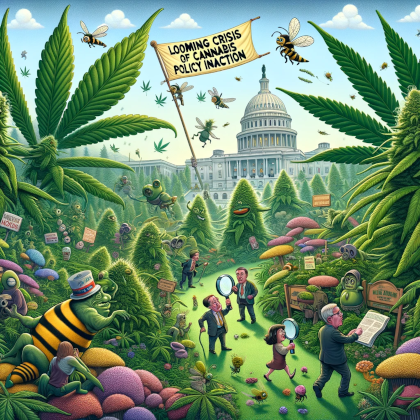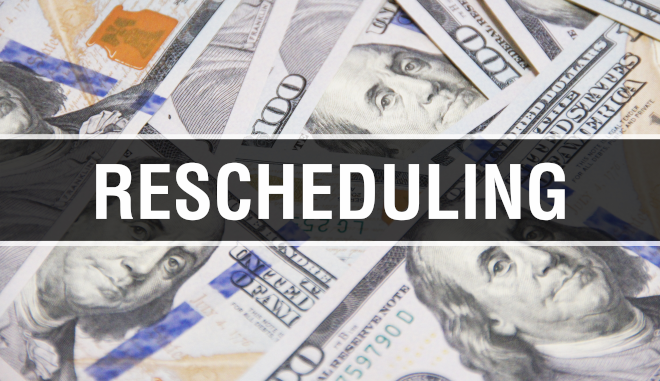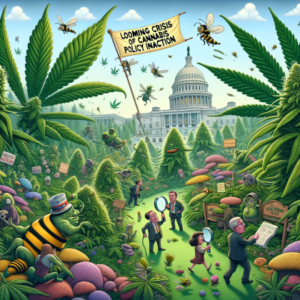
Shocking Cannabis Statistics In Legal States Call Attention to the Looming Crisis of Policy Inaction
Earlier this month, an analysis from the Pew Research Center found a handful of statistics that seem pretty obvious when you think about them. According to the findings, a staggering 54% of Americans live in states where recreational marijuana use is perfectly legal, and 74% find themselves in states where weed is legal for either medical or recreational purposes.
But it doesn’t stop there. Almost 80% of Americans are now within arm’s reach of a dispensary. The US houses nearly 15,000 cannabis dispensaries total, with California hosting more dispensaries than Starbucks. Oklahoma hosts a staggering 36 dispensaries for every 100,000 residents.
That said, it’s really showcasing how well cannabis is being integrated into the states. As a solid economic driver, it’s created thousands of jobs and brought in higher tax revenue than alcohol in nine states. It’s also improved the quality of life for veterans and those with chronic conditions and paved the way for thousands of research papers exploring the medicinal value of the plant.
Americans are fully embracing cannabis. For the first time in history, people are looking at full legalization in a positive light. Over 70% of people favor federal legalization, and people are even using it at an accelerated pace. Half of all Americans have tried weed, and use among seniors has tripled in a few short years. To take it a step further, estimates indicate that cannabis is going to add about $115.2 billion to the economy this year alone, with estimates suggesting that global cannabis sales may jump from $13.4 billion in 2020 to a massive $148.9 billion by 2031.
Yet, despite all of the traction, cannabis remains an illegal Schedule I substance on a federal level. These numbers paint a picture of a nation deeply divided between state and federal laws. It’s a dichotomy that leaves citizens and lawmakers alike scratching their heads in confusion. However, despite the overwhelming trend toward acceptance and adoption at the state level, the federal government seems content to look the other way or actively stifle progress.
The ramifications of the disconnect between federal and state laws are problematic, to say the least. Take, for example, the doctors who risk their license to practice medicine every time they advocate for cannabis for a medical patient at the end of their life.
“Do no harm” is carefully woven into the Hippocratic oath, and for many doctors, recommending cannabis during end-of-life care to improve quality of life is vitally important. But despite state-level legalization, federal regulations put these medical professionals at risk of losing their licenses and livelihoods simply for providing care to those who require it.

The problems don’t stop there. For businesses operating in the cannabis industry, the federal government’s iron grip makes it nearly impossible for these businesses to come out of that prohibitionist mentality.
Federally insured banks can’t work with cannabis, making it harder for these businesses to become legitimized and regulated on pace with other companies in alcohol and pharmaceuticals. Most are forced to operate on a cash-only basis due to federal restrictions and become prime targets for theft and robbery while also facing significant hurdles when it comes to taxation and financial transparency. It keeps a legitimate industry under a black market veil.
And then there’s the issue of interstate travel, where the disconnect between federal and state laws can have dire consequences for unsuspecting citizens. Despite the legality of cannabis in their home state, ordinary people risk running afoul of federal law when crossing state lines with their medically prescribed weed, even if the neighboring state is cannabis-friendly.
So why, in the face of overwhelming public support and clear evidence of the benefits of legalization, does the federal government continue to drag its feet? The answer lies in a toxic mix of political inertia, entrenched interests, and a stubborn refusal to acknowledge the changing times.
The evidence seems to suggest that they can’t be bothered to face the cannabis industry as a reality. Cannabis is still a Schedule I substance, meaning that at any point, the fed could start cracking down on the regulations the states have established. Lawmakers just don’t seem to care enough to do so, or they tend to err on the side of being against cannabis instead of for it, like regular citizens.
A lot of that comes from antiquated beliefs, which seems pretty obvious when you consider that the average age of voting members of the House is 58, and voters in the Senate average out at about 65. That puts many of our decision-makers growing up during the height of the War on Drugs— relics themselves of a time when Reefer Madness was considered gospel truth.
However, outdated ideologies are not the only obstacles to progress. Political gridlock in Washington, DC, fueled by conflicting voices and partisan divides, has effectively shackled any meaningful federal action. While voices on both sides of the aisle may clamor for reform, the cacophony of competing proposals and agendas serves only to stall any real change. Is it about cash in the pockets or simply avoiding regulation at all costs?
Even within the government, the landscape remains bleak. Presidential hopefuls, both past and present, offer little solace to those seeking a way out. From President Biden’s lukewarm stance on rescheduling it to former Governor Chris Christie’s outright disdain, the prospects for meaningful change seem dim at best.
Regardless of their reasoning, the question remains: What’s it going to take for these public servants to wake up to the taxpayers who make up the country they’re here to serve? The benefits of cannabis legalization are manifold, from economic booms in states like California to the potential for criminal justice reform that could right the wrongs of past prohibition.
Yet, these voices are drowned out by the inertia of a broken system, where progress is measured not in leaps and bounds but in frustratingly slow increments. For the federal government to address the chasm between state and federal cannabis laws, it would require a seismic shift in political priorities, bipartisan cooperation, and a recognition of the overwhelming public support for legalization.
Additionally, comprehensive reform efforts would need to tackle issues like banking regulations, interstate commerce, and medical access, paving the way for a coordinated approach that aligns federal policies with the realities on the ground.
But hope is not lost. As states continue to lead the charge toward legalization, the federal government may yet be forced to listen to the will of the people. With each passing day, the voices calling for an end to cannabis prohibition grow louder, drowning out the naysayers and skeptics.
In the end, it’s not a matter of if but when the federal needle will finally move. It may take another decade, but when it does, it’ll be thanks to the tireless efforts of advocates and activists who refuse to be silenced, no matter the odds stacked against them.








